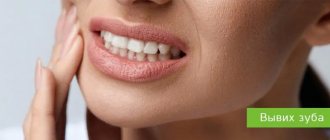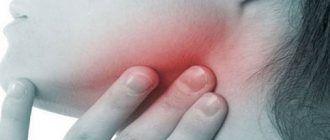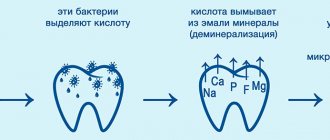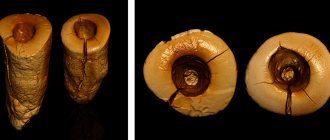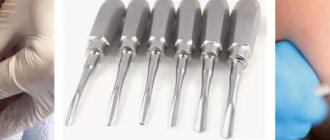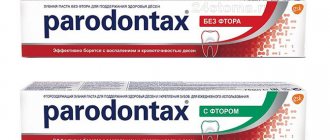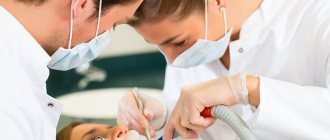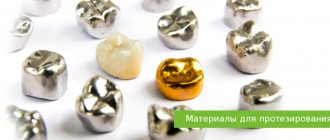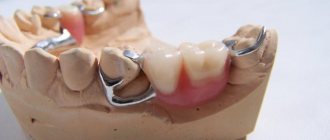Even if you take excellent care of your teeth and regularly visit the dentist, there is always a risk of mechanical damage to both baby and permanent teeth. This happens quite often: such injuries rank 5th among the most common diseases in the world. About a billion people have suffered dental injuries during their lives, and in the vast majority of cases the front teeth are damaged, which affects the aesthetics of the smile. But in such emergency situations, patients do not always know what to do and how to behave, whereas the faster and more correct first aid is provided, the higher the chances of saving the tooth. Olga Sergeevna Tishkina, a dentist-therapist and esthetician at the Iceberg Clinic in Moscow, talks about the types and classification of dental injuries, what to do in such a situation and how the dentist can help you.
Diagnosis of tooth trauma
In case of tooth injuries, timely assistance is very important to minimize the consequences of damage. It cannot be put off until later (after a day, a week, etc.) - it is important to provide yourself or your child with first aid correctly and contact a dentist as soon as possible. But first you need to figure out what damage is considered a tooth injury.
Mechanical tooth trauma is damage resulting from falls, impacts, accidents and other external influences. They violate the shape of the tooth and the integrity of dental tissues. Mechanical injuries of various types are divided into acute and chronic dental injuries. The first type includes damage to teeth as a result of a single and strong action (falling from a bicycle, swing, scooter, biting too hard food or a toy, a blow to the teeth due to an accident, etc.).
Chronic injuries are associated with bad habits (for example, chewing pencils, pens, seeds) or with a violation of the closure of teeth, due to which the dental tissues are gradually injured.
➢ The peak of injuries to permanent teeth occurs at primary school age - 8-10 years, and for milk teeth - at 2-3 years.
➢ Injury to permanent teeth is less common among professional athletes, since they wear special protection - helmets, mouth guards, and shields.
➢ Most often, injuries occur for everyday reasons: during breaks at school, during active games, at home, on the street, etc.
➢ Trauma to the front teeth, especially the incisors, is the most common occurrence (about 80% of cases).
➢ The risk of damaging teeth is 3 times higher in people with a distal bite, in which the front teeth protrude forward and the lower jaw is in a posterior position.
Causes
Very often, dentists are faced with the problem of dental injuries not only in children and athletes, but also in ordinary people who are not prone to active life. After all, in order to injure a tooth, it is not necessary to practice boxing, play hockey or jump on roofs; it is enough to simply slip on level ground and fall unsuccessfully. Unfortunately, such cases are not rare.
In itself, a tooth injury is nothing more than a violation of the integrity of the natural shape and position relative to the rest of the jaw, as well as, in most cases, damage to the surrounding soft tissues. Most often, the causes of injuries are fights, industrial accidents, accidents, as a result of which the front teeth suffer for the most part, but injury to the teeth in the chewing area is not excluded.
Classification of dental injuries
The ICD-10 (International Classification of Diseases) classification of dental injuries includes more than ten types of dental injuries. To summarize, all mechanical damage is divided into:
- for injuries to the tooth itself or fractures;
- tooth displacement or dislocation;
- damage to soft tissues and jaws.
It is also worth noting a bruise - minimal damage to a tooth when it looks intact and visually no damage is visible - no chips, no cracks. But due to the impact, the blood supply to the tooth pulp may be disrupted, and subsequently the tooth may darken. Tooth bruises belong to the first class of injuries according to ICD-10. It hurts to touch, bite and chew food.
First aid for a bruise is to give pain relief if necessary, and consult a dentist as soon as possible.
Procedure for providing assistance to children with dental damage
Immediately after receiving an injury, the patient is provided with primary medical care, which includes a general assessment of the child’s condition, pain relief, prescription of antibiotics, anesthetics and other medications, as well as a preliminary diagnosis. After this, the patient’s parents are given a recommendation to make an appointment with a pediatric dentist (therapist), who will carry out full dental treatment. The doctor providing specialized care carries out:
- registration of a medical history (including legal and social aspects of the case);
- collecting anamnesis (origin of injury, presence of concussion, local symptoms);
- clinical examination of the injury (visual examination, percussion, palpation, temperature tests of the pulp, instrumental methods);
- additional diagnostics (electroodontodiagnostics (EDD), transillumination, targeted radiography, occlusal radiography, computed tomography);
- making a diagnosis based on examination, clinical and other studies;
- choice of treatment tactics taking into account the nature of the damage, possible risks, benefits and costs.
The period of rehabilitation of a child after an injury, starting from the moment of emergency assistance, can take 1-3 or more days. Given the complexity of treatment, the period of complete restoration of the integrity and functions of damaged teeth often takes a longer period - several months or even years.
Dental injuries in the form of fractures
Chips of enamel, fractures of the coronal part with damage to the pulp, fractures of the roots - all these injuries fall into the category of “tooth fracture”. There are 3 options for fractures of primary teeth:
- if the baby tooth is slightly injured, then the doctor usually monitors its condition;
- In case of significant damage, the baby tooth is removed in order to preserve the permanent tooth germ, since the injured baby tooth becomes a source of infection. This often happens with longitudinal fractures - when the tooth cracks in half lengthwise, and it is no longer possible to save it;
- in other cases, the tooth can be saved through restoration and canal treatment. In young children, treatment is often carried out during sleep.
First aid for a tooth fracture: It is very important to collect all the tooth fragments and put them in water or milk. If you collect all the parts of the tooth and quickly, within half an hour, get to the dentist, the tooth can be restored and it will be successfully fixed in the socket. If it was not possible to collect the tooth particles, then treatment of the tooth injury is carried out:
- In case of minor damage to the enamel (chips, cracks), tooth polishing is not performed - the dentist restores the tooth by installing a filling.
- If there is severe damage to the crown of the tooth, endodontic treatment may be required to preserve the pulp and then the installation of an inlay and/or crown.
- If the root is fractured, the tooth is rigidly splinted for 3-4 months, and the dentist monitors the condition of the pulp. Sometimes it is necessary to treat the canal of a coronal fragment, but there is no need to connect the fragments with pins. The tooth can almost always be saved, since this is a sterile injury, and the treatment prognosis is favorable, and therefore it is not necessary to remove teeth with a broken root.
The peculiarities of dental prosthetics in children are the impossibility of using implants, so a lost tooth is replaced with a removable plate, an artificial tooth is fixed with fiberglass to adjacent teeth, or orthodontic mini-screws are used to fix the prosthesis with a temporary screw. Tooth replantation is also used - transplantation of a lateral tooth in place of a missing one.
Dislocation
When a tooth is dislocated, sometimes it is impossible to completely close the mouth, or the tooth becomes loose and changes its position relative to other teeth. How to distinguish a tooth dislocation from a fracture? If the appearance of the teeth has changed - they have become shorter, tilted, etc., and the gums are bleeding, then you are dealing with a dislocation.
First aid for dislocation is the most correct tactic: do not let the child close the teeth, do not touch them and do not try to set them back on their own, because such displacements can be accompanied by injuries to the bone and gums. It is best to immediately contact a dentist, who will take a three-dimensional photograph, return the teeth to the correct position, and apply dental plaster for several weeks. The sooner you do this, the better.
Experts distinguish between many types of dislocations, including partial, complete and impacted.
Partial dislocation
With such damage, the tooth partially falls out of the socket. Often the alveolar wall is damaged, there is a tear in the periodontal fibers, and therefore the tooth becomes loose, bleeding occurs, and severe pain occurs when pressing and chewing. However, the anatomical structure is not disturbed, so the main task is to fix the tooth in the correct position in the socket until healing. In case of partial dislocation, this is achieved using special caps or splinting. The key point is to get the victim to the dentist as quickly as possible.
Complete dislocation
The tooth completely falls out of the socket, which is accompanied by heavy bleeding. When a baby tooth falls out, it is not reinserted, since placing the baby tooth in the socket can damage the germ of the permanent one. But if a permanent tooth falls out, then the necessary first aid is to find the tooth, wash it with water, but do not rub it or treat it with alcohol, since there are still living cells on it. Then the tooth needs to be inserted into the socket or, if this is not possible, put the tooth in milk and call the clinic to get instructions on how to do this.
If the tooth is placed back into the socket within 5 minutes, the prognosis is favorable - the tooth will successfully take root. Over a period of 5 to 10 minutes, the chances decrease as the number of living cells decreases. If the tooth has been exposed to air for a long time and has dried out, it will not take root for long, just a few years.
In any case, you need to get to the clinic as soon as possible - preferably within half an hour. If this is not possible, then contacting a dentist is still necessary. It is necessary to carry out root canal treatment, since when a tooth is severely displaced or falls out completely, the blood supply to it stops.
Impacted dislocation
Milk teeth are very often driven deep into the socket, since when they fall, the impact force is directed from bottom to top. This is very dangerous for the buds of permanent teeth, which are located behind the roots of baby teeth. Due to such trauma, various disturbances in the formation of the enamel of permanent teeth can occur, which manifest themselves in the form of yellow and white spots or defects in the shape of the tooth. It is necessary to take a targeted picture on a visiograph to assess the risks for permanent teeth. If a baby tooth is impacted too deeply, it is removed to reduce the risk of developing defects in permanent teeth. Sometimes tooth reduction is performed, in which the dentist very carefully returns the impacted tooth to its correct position and then splints it.
Tooth injuries are often accompanied by damage to soft tissues - cheeks, gums, lips. In this case, the dentist prescribes mild antiseptics - most often chlorhexidine preparations, as well as a gentle diet without harsh foods.
Make an appointment
right now!
Tishkina Olga Sergeevna
Therapist
Diagnosis and treatment of tooth dislocation
Using an x-ray and available clinical data, the type of injury received is revealed. In addition, it is possible to conduct a radiovisiographic study to study the condition of the alveolar bone and the position of the tooth. Treatment is prescribed according to the specific type of injury.
In case of incomplete dislocation, therapy is indicated to preserve the tooth. It is repositioned with fixation using mouthguards, wire splinting structures or splints. It is also recommended to take medications to prevent infection and the development of the inflammatory process. A repeat examination by a dentist is carried out a month later.
Endodontic treatment is indicated in case of pulp death.
In case of complete dislocation, prosthetics are necessary. Sometimes replantation is performed: the damaged tooth is returned to the socket, splints or splinting structures are used for healing.
Treatment of impacted dislocations involves several options:
- tooth extraction and its replacement with a prosthesis;
- tooth extraction with its replantation;
- immediate reposition of the tooth with its subsequent immobilization;
- long-term reduction.
Where to go with a dental injury
But if you have already provided first aid to a child or adult for a tooth injury, then why also contact a dentist? The fact is that there are damages that cannot be seen with the naked eye - for example, a fracture of the tooth root inside the bone, fractures of the jaw bones and the walls of the tooth socket. Even after successfully placing the tooth back into the socket, splinting is necessary - this is the temporary stabilization of the tooth using a wire that is attached to adjacent teeth. In some cases, it is necessary to suture the edges of the wound or prescribe antibiotics.
If you ignore the problem and do not consult a doctor on time (or do not visit the clinic at all), complications will arise. The tooth may darken, become mobile, and the most common complication after a tooth injury is pulp necrosis, in which the neurovascular bundle inside the tooth dies. The dentist uses special tests to determine the vitality and condition of the pulp. Leaving dead tissue inside a tooth can lead to tooth root resorption as the body begins to perceive it as a foreign body due to infection. This leads to tooth loss in a fairly short time. This is why it is very important to have your teeth examined by specialists after an injury.
The Iceberg Dental Traumatology Center has a free hotline where doctors and patients can obtain information on the treatment of dental injuries.
Tooth crown crack
If you enter “What is trauma” into a search engine, then any site gives the concept of “damage, disruption of the unity, completeness of a tooth, disruption of its functions.” With such an injury as a crack in the crown of a tooth, this statement is not entirely suitable. And now I’ll try to explain to you why. Firstly, the unity of the tooth (its completeness) when the tooth crown is cracked is not violated: there is simply a violation of the structure (structure) of the tooth enamel.
The main symptoms that patients diagnosed with a cracked tooth crown present with are: unsatisfactory aesthetics, teeth reaction to sour/sweet, cold/hot.
Cracked tooth crown clinic
The clinical picture of a cracked tooth crown is as follows: externally, both the doctor and the patient see visible lines running parallel to the surface of the tooth - cracks in the tooth crown; secondly, if a tooth has a crack, then it can perform its function. Of course, it is not a fact that it will be 100%.
A crack in the crown of a tooth can be single, paired, multiple or combined.
A crack in the crown of a tooth can be vertical or inclined. Most often, a crack in the tooth crown ends in the area of the enamel-dentin junction. But with significant force, a tooth crack can spread not only to the crown, but also to the root of the tooth.
The clinic also described cases where a crack in the crown of a tooth was located on teeth whose neighbors had more severe tooth trauma.
Diagnosis of a cracked tooth crown
Patients with a crown crack are not sent for an x-ray, as this is not necessary. But for high-quality diagnosis of tooth crown cracks, transillumination (transillumination) is currently used.
Treatment of a cracked tooth crown
Cracks in the crown of a tooth do not require treatment. But in such cases, the doctor needs to make sure that the pulp is vital. You can do repeated tests for control within 6 months.

